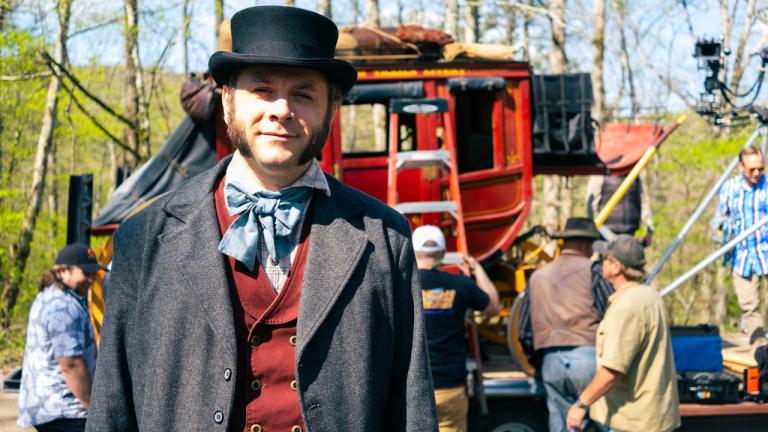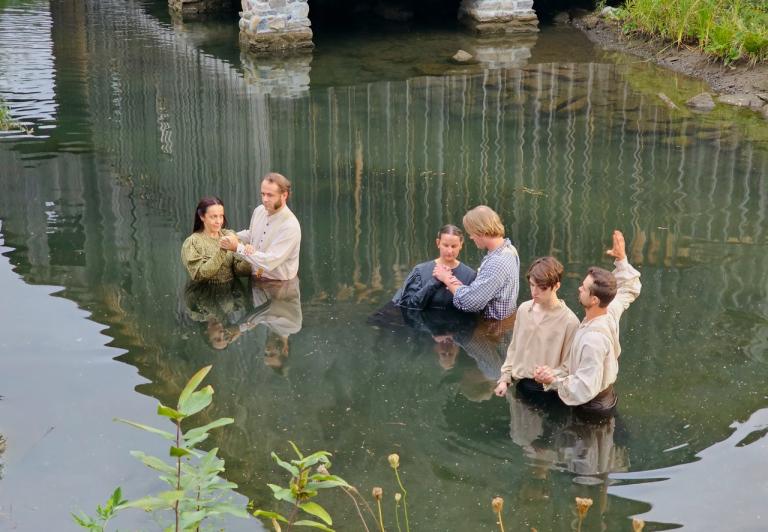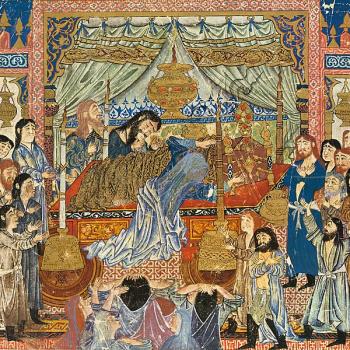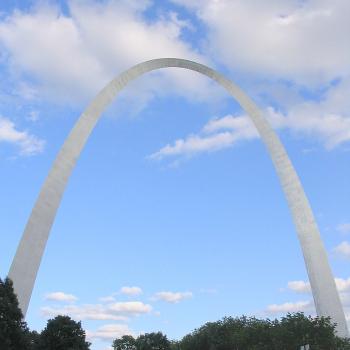
Today, we entered the area known as the Staffordshire Potteries, which is particularly associated in Latter-day Saint history with the missionary labors of Wilford Woodruff.
First, we visited World of Wedgwood in Stoke-on-Trent. It is the headquarters and principal factory of Waterford Wedgwood Royal Doulton, an English manufacturer of fine china, porcelain, and luxury accessories that was founded on 1 May 1759 by the potter and entrepreneur Josiah Wedgwood. I confess to having only, at best, a mild interest in such things, but Josiah Wedgwood was an interesting figure, along with his close friends the physician, natural philosopher, and poet Erasmus Darwin and the chemist and natural philosopher Joseph Priestly. For his experiments, inventions, and discoveries, Josiah Wedgwood himself was elected a member of the Royal Society in 1783. Wedgwood was an ardent abolitionist, a pioneer of modern marketing — think of such things as direct mail, money-back guarantees, self-service, free delivery, the offer of “buy one, get one free,” and illustrated catalogues — and a major figure in the rising Industrial Revolution. Moreover, he and Erasmus Darwin share an influential grandson named Charles, who was able to undertake a nearly five-year voyage around the world on HMS Beagle and to spend decades as a leisured gentleman naturalist because he was an heir to the Wedgwood fortune.
We were taken on a tour of the factory and shown something of the processes of creating bone china and jasperware , although we were not given the secret formula behind the latter, which is said to be known in its entirety to only three people. As I mentioned above, I’m not especially interested in fine china, and my lack of interest, combined with the stratospheric prices of Wedgwood products, meant that I didn’t even bother to go into the showroom. But, after the tour, the exhibit in the Wedgwood museum was well worth some time.
Thereafter, we also visited Blists Hill Victorian Town, an open-air museum in Shropshire that is located in a former industrial complex. The object of this visit and of our visit to World of Wedgwood was to try to better our understanding of the England of the Industrial Revolution, the nineteenth-century Victorian England into which the earliest missionaries came and out of which a large number of Latter-day Saint converts emerged.
Following Blists Hill, we took a good look at the nearby Iron Bridge UNESCO World Heritage Site. This is where the world’s first cast iron bridge was erected over the River Severn in 1779. It’s another important landmark from the early Industrial Revolution.
Half of us are lodging tonight in the famous Ledbury inn known as The Feathers, which probably dates back to the years 1560-1570. My wife and I stayed there once before during a visit to Ledbury with my late brother and his late wife. (How I miss them!) I well remember that the floor of the room that we had then curved sharply downward at one corner, owing to subsidence of the building at that point, in a manner that reminded me powerfully of illustrations that I’ve seen of Riemannian curved spacetime; it was great fun to be there, but I was literally concerned about the possibility of falling and rolling down. However, my wife and I are not among the half of the group that are staying in The Feathers this time. Rather, we’re spending the night right around the corner in another hotel, The Talbot, that is of comparable age. A bullet hole in the dining room where we had dinner tonight seems to date to around 22 April 1645, when the forces of Parliament were driven out of Ledbury by the royalists, who fought under the command of Prince Rupert of the Rhine.
We’re not far from Ludlow. If I were on my own today, I would zip over to pay my respects again to A. E. Housman, who is buried there at St Laurence’s Church. I’ve repeatedly shared his poems “Easter Hymn” and “To an Athlete Dying Young” here. Now, in his honor, I call your attention for the first time to another, “Is My Team Ploughing.” From his famous anthology A Shropshire Lad, it’s vintage Housman: somewhat melancholy, gently cynical, death-obsessed. For some reason, he has always spoken deeply to me.

First, it contains the fulness of the gospel (see D&C 20:9). Its correct explanations of the divinity, the mission, and the atonement of Christ, along with the principles of faith, repentance, and the other plain and precious parts of the gospel, are taught with unmistakable clarity. By reading the texts of the Bible in light of the knowledge afforded by the Book of Mormon, many plain and precious parts of the gospel can be clearly understood; that is, “they are all plain to him that understandeth” (Proverbs 8:9; compare John 16:25, 29). Without that understanding, many biblical passages (although perhaps even textually sound) remain a source of stumbling for many.
Next, the Book of Mormon restores many covenants of the Lord. It provides us with the words of the baptismal prayer, along with instructions concerning the meaning and proper mode of baptism (Mosiah 18; 3 Nephi 11; Moroni 6) and of confirmation (Moroni 2). It preserves from ancient times the very words of the sacrament prayers (Moroni 4-5) and makes the Lord’s covenants to the House of Israel understood. It also teaches the necessity of priesthood authority and the manner of ordination (see, e.g., Moroni 3).
Finally, while corroborating several biblical texts, the Book of Mormon also contains many additional words that the Lord spoke on earth. It also affirms that the Lord has spoken unto all men “in the east and in the west, and in the north, and in the south,” and that they have been commanded to write (2 Nephi 29:11).
Posted from Ledbury, Herefordshire, England











